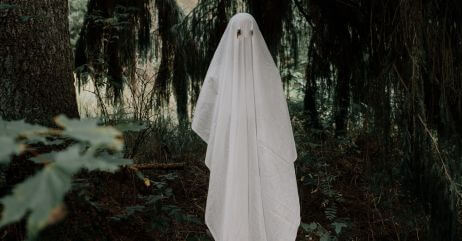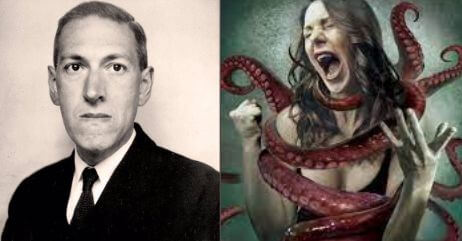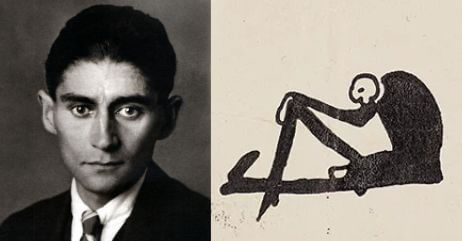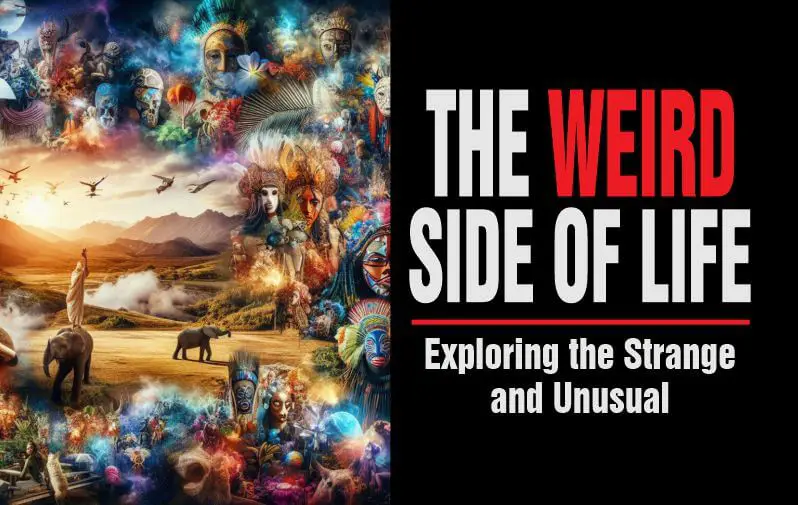Last updated on September 16th, 2024 at 11:06 am
Let’s examine the weird side of life, and talk about the bizarre cultural traditions, unusual historical events, and strange natural occurrences that make up our quirky existence.
Growing up, my grandmother told us many bizarre stories, both the ones she experienced and the ones she heard.
While some of the experiences are eerie and something you could call paranormal, they are part of human existence.
The human experience is replete with the strange and unusual, elements that consistently draw our curiosity and spark big questions in our imagination.
From bizarre phenomena to peculiar behaviors, our fascination with the unusual is not merely a fleeting interest but an area of our cognitive and emotional makeup.
The strange serves as a mirror reflecting our desire for understanding and our need to make sense of the incomprehensible.
One significant factor contributing to our attraction to the weird is curiosity. Humans are naturally inclined to explore the unknown, and the strange presents boundless opportunities for discovery.
Encounters with the unusual can prompt questions that challenge our existing knowledge and beliefs.
Additionally, entertainment plays an important role; stories filled with bizarre occurrences or odd individuals offer a form of escapism that can be both thrilling and enlightening.
The weird beckons us to venture beyond the mundane, reminding us that there is much more to life than what meets the eye.
Recommended: 66 Strange Animals You Never Knew Existed
Table of Contents
- What is Weird?
- Intriguing Aspect of Weirdness and its Impact on Human Curiosity
- Bizarre Historical Events
- Strange Animals and Their Behaviors
- Odd Medical Conditions: The Human Body’s Quirks
- Bizarre Cultural Practices and Traditions
- The World of the Supernatural and Paranormal Weirdness
- Unusual Food and Culinary Oddities
- Critique of Scientific Explanations Versus the Belief in Supernatural Occurrences
- Weird Art and Literature
- Analysis of Surrealism and its Influence on Artistic Weirdness
- Exploring the Weird in Modern Media
- Famous Weird Authors and Their Contributions to Literature
- Bizarre Themes in Contemporary Art and Literature
- Exploring the Weird in Modern Media
- Internet Weirdness
- Psychological Perspectives on Weirdness
- Frequently Asked Questions
- Conclusion: Embracing the Weirdness of Life
What is Weird?
Weird is a term typically used to describe something strange, unusual, or out of the ordinary. It often refers to things that deviate from societal norms or expectations.
Related: Weird Failed Inventions of the Past
Intriguing Aspect of Weirdness and its Impact on Human Curiosity
The intriguing aspect of the bizarre lies in its ability to capture and captivate human curiosity. Humans are naturally curious beings, constantly seeking to expand their understanding and knowledge of the world.
The unusual sparks curiosity because it challenges what is familiar and comfortable.
It pushes the boundaries of what is considered normal, forcing you to question and explore new perspectives.
The impact on human curiosity is multi-faceted. It prompts you to ask questions, seek answers, and plunge deeper into unexplored territories.
It can stimulate intellectual curiosity, encouraging people to think critically about the world around them.
It challenges preconceived notions, stimulates creativity, and fuels the desire to discover something new and exciting.
Related: Weird Facts About Women’s Body
Moreover, embracing the strange and unusual encourages individuality and self-expression.
Related: Weird Gifts that Will Make them Speechless

Bizarre Historical Events
History is often viewed through a serious lens, but it is also replete with bizarre events that highlight the eccentricities of human nature.
Let’s take a closer look…
Dancing Plague of 1518
One of the most peculiar wars in history is the “Dancing Plague” of 1518, which struck the town of Strasbourg, then part of the Holy Roman Empire.
It began when a woman, Frau Troffea, started dancing uncontrollably in the streets.
This inexplicable phenomenon spread to dozens of other citizens who joined in, seemingly unable to stop.
Historical accounts suggest that some individuals danced for days, leading to exhaustion, and even death.
This bizarre event illustrates how mass hysteria can impact communities, creating an unusual legacy that has baffled experts for centuries.
Salem Witch Trials (1692)
One of the most famous examples of how weirdness has been perceived in history is the Salem Witch Trials.
During this period in colonial Massachusetts, a wave of hysteria and fear spread, leading to the accusation and execution of several individuals believed to be practicing witchcraft. The events were driven by superstition, social tensions, and a belief in supernatural forces.
The Mandatory Sunday Archery in England
Peculiar laws also pepper history, showcasing the oddities that societies have deemed necessary.
For instance, in the 13th century, a law in England mandated that all inhabitants must practice archery on Sundays, reflecting the need for readiness against potential invasions.
This decree demonstrates the unusual relationship between legality and cultural practices.
Moreover, in the town of Harlow in England, height restrictions were enforced for men entering local taverns, revealing how bizarre local regulations can dictate social behavior entirely.
Ancient Roman’s Superstition of the Black Cat
Superstitions offer another glimpse into the strange side of human belief systems throughout history.
The ancient Romans held numerous peculiar beliefs, such as the superstition that a black cat crossing one’s path could lead to misfortune.
Even today, this sense of dread endures, highlighting how strange occurrences can create lasting cultural impacts.
Other unusual beliefs included the idea that sneezing would release one’s soul, enforcing bizarre behaviors related to health and spirituality.
Strange Animals and Their Behaviors
Nature exhibits a remarkable range of diversity, particularly within the animal kingdom, where various species demonstrate unusual and often bizarre behaviors.
The Axolotl
Among these strange animals, the axolotl stands out due to its unique ability to regenerate lost limbs.
This fascinating amphibian, native to the lakes of Mexico, can even regenerate parts of its brain, making it an extraordinary specimen in studies of regenerative medicine.
Platypus
Another quirky creature is the platypus, an egg-laying mammal that possesses characteristics unlike those of most other mammals.
The platypus has webbed feet, a bill resembling that of a duck, and is one of the few venomous mammals.
Its peculiarities make it a subject of intrigue for biologists and animal enthusiasts alike.
The Cuttlefish
The cuttlefish, known for its impressive camouflage abilities, showcases remarkable behavioral adaptations as well.
This cephalopod can change its color and texture in an instant to blend seamlessly into its surroundings, a skill primarily used for evading predators and ambushing prey.
Cuttlefish are capable of displaying complex social signals through color changes, thus indicating their mood or intentions to others in their environment.
Lyrebird
Exploring the oddities of animal behavior, the lyrebird is often celebrated for its astonishing ability to mimic a wide array of sounds, including human-made noises like chainsaws and camera shutters.
This remarkable mimicry not only assists in attracting mates but also demonstrates a level of intelligence that sets it apart from many other avian species.
Odd Medical Conditions: The Human Body’s Quirks
The human body is an intricate and fascinating structure, with its complexities sometimes leading to bizarre medical conditions.
These rare syndromes, which often showcase the peculiarities of our biology, can dramatically affect individuals’ lives while capturing scientific curiosity.
Fibrodysplasia Ossificans Progressiva (FOP)
One such condition is known as Fibrodysplasia Ossificans Progressiva (FOP), where the body gradually turns muscle and connective tissue into bone.
This rare disorder not only restricts movement but also poses significant challenges for daily life, leading to a remarkable understanding of human physiology and the mechanisms of healing.
Cotard’s Delusion
Another intriguing syndrome is Cotard’s Delusion, where individuals believe they are dead or do not exist.
Originating from a psychological perspective, it presents a unique glimpse into human mind and perception.
Those afflicted with this condition may experience a range of symptoms including profound depression and delusions, making it essential for mental health professionals to step in to address both the psychological and existential aspects of the disorder. T
Bizarre Cultural Practices and Traditions

The Unusual Traditions Around the World
Of course, cultural traditions are a fundamental part of human societies, reflecting their histories, beliefs, and unique practices.
Across the globe, some of these traditions stand out for their strangeness and peculiarity, often challenging outsiders’ perceptions and expectations.
Let’s examine some of those to provide insightful glimpses into the values and worldviews of different communities.
La Tomatina Festival in Spain
One such tradition is the La Tomatina festival in Spain, where participants engage in a massive tomato fight, throwing ripe tomatoes at each other in a spirited display of joy and celebration.
When I first watched this event, what kept throbbing my mind was, “why are they wasting tomatoes?”
This quirky event takes place annually in Buñol, drawing thousands from around the world.
The origins of La Tomatina are unclear, but many believe it began in 1945 during a parade, and it has since evolved into a globally recognized event that showcases the whimsical spirit of the town and its residents.
Weird Marriage Customs
In some cultures, marriage customs can be particularly unusual. In some parts of Northern Nigeria, a man will endure multiple strokes of the cane to be eligible to marry his wife.
In parts of India, the Kanyadaan ritual involves the father giving away his daughter, which symbolizes the transfer of responsibility.
However, in the Mosuo community in China, a matriarchal society, love is expressed through “walking marriages,” where women invite men to stay overnight without any formal commitment, thereby celebrating romantic freedom while maintaining familial bonds.
Matsuri Festival in Japan
Another intriguing practice can be found in the country of Japan, where the Matsuri festivals are celebrated to honor deities, seasonal changes, and harvests.
These events often include parades featuring elaborate floats and traditional performances, yet one of the most unique aspects is the festival of Kanamara Matsuri, which is dedicated to fertility and features an abundance of phallic symbolism, reflecting the community’s humorous approach to serious themes.
The Day of the Dead (Día de los Muertos) in Mexico
This tradition involves honouring the deceased through vibrant celebrations, elaborate altars, and graveyard gatherings. \
It is rooted in indigenous beliefs, where death is seen as a natural part of life and an opportunity to spend time with loved ones who have passed away.
This practice combines indigenous rituals with Catholicism, blending pre-Hispanic cultures with the colonial era.
Baby Jumping Festival (El Colacho) in Spain
This festival, held in the village of Castrillo de Murcia, involves men dressed as the devil jumping over newborns lying on mattresses.
The tradition is believed to cleanse the babies of original sin and protect them from evil. It dates back to the early 17th century and combines Catholicism with ancient superstitions.
Holi Festival in India
This lively Hindu festival involves throwing colorful powders and water at each other, signifying the arrival of spring and the victory of good over evil.
The festival has both religious and mythological significance, associated with events from Hindu scriptures.
It is celebrated with enthusiasm and joy, fostering community bonds and breaking down social barriers.
Cheese Rolling Festival in England
In this event, participants chase a round Double Gloucester cheese down a steep hill, risking injury in the pursuit of the cheese.
The origins of this tradition are unknown, but it has been held for centuries, possibly dating back to pagan rituals celebrating the arrival of spring or fertility rites.
The World of the Supernatural and Paranormal Weirdness
I have always wondered the power behind the forces in nature and I imagine how his day-to-day activities are.
You might find this amusing, but our imagination strays sometimes, asking the big questions.
The supernatural is attributed to a multitude of phenomena that defy rational explanation, intriguing both believers and skeptics.
This area of our life includes a variety of phenomena such as ghosts, UFO sightings, and other mysterious occurrences that challenge our understanding of reality.
Related: Psychic Abilities
Ghost Sightings

As a kid, my grandmother would always use ghosts lurking in the neighborhood at night to make me stop crying for whatever reasons.
Not just her, people always talk about ghosts and how they have the power to appear and disappear and harm people.
Perhaps, this is one of the most well-documented aspects of the supernatural.
Reports of apparitions, or specters, date back centuries, with individuals claiming to encounter the spirits of the deceased.
Haunting of the Stanley Hotel in Colorado
Documented cases, such as the haunting of the Stanley Hotel in Colorado, sparked interest in the investigation of paranormal events, leading enthusiasts to capture evidence through electronic voice phenomena (EVP) and ghost hunting tools.
These bizarre stories serve to fuel whether there is an afterlife and if souls can linger on Earth beyond death.
Another strange subject with the supernatural realm is the increasing number of UFO encounters.
UFO (Unidentified Flying Object)

When I first learned how to read, the first article I read was about UFO, and the memory stuck.
I imagined how things could be flying in the air without knowing what they are and where they came from. Nothing can be bizarre and frightening at the same time.
As advances in technology enable clearer and more precise recordings, a growing number of unidentified flying objects have been reported across the globe.
High-profile incidents, such as the 2004 USS Princeton UFO sighting, have prompted serious discussions regarding extraterrestrial life and the possibility of interstellar visitation.
The scientific community remains divided, with some advocating for rigorous investigation and open-minded inquiry while others dismiss these tales as mere fabrications or misunderstandings of natural phenomena.
As humanity continuously seeks answers to these bewildering occurrences, the pursuit of understanding the supernatural and unexplained will undoubtedly persist.
Unusual Food and Culinary Oddities
Gastronomy is filled with a remarkable array of unusual food and culinary oddities that often defy conventional expectations.
From the infamous delicacy of escargot in France to the bizarre taste of durian in Southeast Asia, each strange food item carries its own cultural coloration and preparation methods that reflect the unique practices of the society from which it originates.
Hákarl – the Icelandic Dish
One notable example is the Icelandic dish called hákarl, which is the fermented shark.
The preparation involves burying the shark underground to allow it to decompose and then hanging it to dry for several months.
This traditional dish often met with hesitation from non-natives, is cloaked in the resourcefulness of a society that relies on its natural resources.
It is a peek into the Icelandic people’s history of preserving food in harsh climates, and its strong ammonia scent is both intriguing and polarizing.
Fried Tarantulas in Cambodia
Another culinary oddity can be found in Cambodia with the consumption of fried tarantulas, known as “a-ping.”
This cringeworthy consumption was a survival mechanism introduced during the Khmer Rouge era has since become a popular street snack.
The preparation involves marinating the spiders before frying them, resulting in a crunchy texture and a taste described as similar to chicken.
This dish not only reveals the inventive spirit of Cambodia’s gastronomy but also resonates with the locals who embrace it as a part of their culinary culture.
Critique of Scientific Explanations Versus the Belief in Supernatural Occurrences

The belief in supernatural occurrences often contrasts with scientific explanations, which rely on empirical evidence and the application of the scientific method to understand the natural world.
Critics argue that the absence of scientific evidence supporting supernatural phenomena makes it difficult to accept their existence.
They emphasize the importance of skepticism and rational inquiry, calling for investigations that adhere to scientific frameworks before accepting supernatural claims.
They argue that many supposed paranormal encounters can be explained by psychological factors such as hallucinations, misinterpretations of natural phenomena, or the psychological need for something beyond the ordinary.
Skeptics highlight the human tendency to believe in the supernatural and the influence of cultural, social, and psychological factors on shaping such beliefs.
However, proponents of supernatural occurrences often emphasize personal experiences and anecdotal evidence as valid forms of knowing.
They point to the limitations of the scientific method in exploring and understanding mysterious or non-repeatable phenomena.
They argue that some supernatural occurrences may transcend current scientific understanding and require alternative modes of inquiry or open-mindedness towards possibilities beyond what science can currently explain.
Weird Art and Literature

Bizarre art and literature are artistic creations that challenge and subvert conventional norms, often exploring unconventional or strange themes, narratives, or aesthetics.
It covers a wide range of works that embrace the bizarre, the uncanny, and the surreal.
Unlike traditional forms of art and literature, unusual art and literature aim to provoke discomfort, awe, confusion, or even fear in the viewer or reader.
Analysis of Surrealism and its Influence on Artistic Weirdness
Surrealism is an art movement that emerged in the early 20th century, emphasizing irrationality, dream-like imagery, and the unconscious mind.
Surrealists sought to explore the depths of the human psyche and create art that went beyond rationality.
Their works often featured juxtapositions of unrelated objects and bizarre, dreamlike scenarios.
Surrealism had a profound influence on the development of artistic weirdness, as it encouraged artists to embrace the absurd, challenge conventional boundaries, and into the depths of the human imagination.
Through their exploration of the subconscious and their use of unconventional imagery, surrealists inspired artists to embrace bizarreness in their works, pushing the boundaries of artistic expression.
Exploring the Weird in Modern Media
In modern society, the strange and unusual are represented in various forms of modern media, including movies, literature, and television shows.
These portrayals serve not only as entertainment but also as a means of expressing societal themes and human experiences and perceptions.
The weird elements leave audiences’ imaginations straying, drawing them into stories that challenge conventional perceptions of reality and normalcy.
Movies
Movies such as “Eraserhead” and “The Lobster” embrace bizarre imagery and abnormal storytelling, pushing the boundaries of traditional filmmaking.
These films provoke thought and discussion, encouraging viewers to reevaluate their understanding of everyday life and societal norms.
Literature
Similarly, literature has seen a rise in the popularity of works that discussed the macabre and surreal, exemplified by authors like Neil Gaiman and Haruki Murakami.
Their stories combine fantasy and reality, inviting readers to engage with the unusual aspects of existence.
Television Shows
Television shows also play a significant role in highlighting the weird side of life.
Series such as “Black Mirror” and “The X-Files” examine the oddities of technology and the human experience, often reflecting contemporary anxieties and fears.
These programs challenge audiences to confront their perceptions of reality, often leaving them with more questions than answers.
By creating unusual themes, modern media creates a collection of the weird, promoting dialogues around fear, identity, and what it means to be human.
Famous Weird Authors and Their Contributions to Literature
Numerous authors have made significant contributions to the genre of unusual art and literature.
H.P. Lovecraft

One of the most prominent figures is H.P. Lovecraft, whose works are characterized by cosmic horror and a fear of the unknown.
Lovecraft’s stories often revolve around ancient cosmic entities and the fragility of the human mind when confronted with unknowable forces.
His creations, such as the Cthulhu Mythos, have had a lasting impact on the genre and continue to influence contemporary bizarre authors.
Franz Kafka

Another important figure is Franz Kafka. Kafka’s works, such as “The Metamorphosis” and “The Trial,” explore the absurdity of human existence and the struggle against an oppressive system.
His writing style, characterized by bizarre situations and a sense of inherent meaninglessness, has become synonymous with literary bizarreness.
China Miéville

Contemporary authors like China Miéville have also contributed significantly to unusual literature.
Miéville’s works often blend elements of fantasy, science fiction, and horror to create strange and unsettling narratives.
His novel “Perdido Street Station” is a prime example, featuring a mix of fantastical creatures and sociopolitical commentary within an unconventional setting.
Bizarre Themes in Contemporary Art and Literature
In contemporary art and literature, offbeat themes continue to thrive. Many artists and writers use the bizarre as a tool for social critique or to challenge established norms.
Themes like the deconstruction of reality, dystopian societies, alternate dimensions, and the exploration of the human psyche are prevalent in contemporary bizarre art and literature.
For example, the works of David Lynch, both in his films and visual arts, are known for their surreal and uncanny qualities.
Lynch often explores dark, unsettling themes and creates dreamlike atmospheres to challenge the viewer’s perception of reality.
In literature, authors like Jeff VanderMeer have gained popularity for their unusual fiction, with works such as the Southern Reach Trilogy, which tells the story of a mysterious, ever-expanding wilderness called Area X.
VanderMeer’s blend of ecological concerns, psychological exploration, and bizarre imagery creates a unique and unsettling reading experience.
Exploring the Weird in Modern Media
In modern society, the strange and unusual are represented in various forms of modern media, including movies, literature, and television shows.
These portrayals serve not only as entertainment but also as a means of expressing societal themes and human experiences and perceptions.
The weird elements leave audiences’ imaginations straying, drawing them into stories that challenge conventional perceptions of reality and normalcy.
Movies
Movies such as “Eraserhead” and “The Lobster” embrace bizarre imagery and abnormal storytelling, pushing the boundaries of traditional filmmaking.
These films provoke thought and discussion, encouraging viewers to reevaluate their understanding of everyday life and societal norms.
Literature
Similarly, literature has seen a rise in the popularity of works that discussed the macabre and surreal, exemplified by authors like Neil Gaiman and Haruki Murakami.
Their stories combine fantasy and reality, inviting readers to engage with the unusual aspects of existence.
Television Shows
Television shows also play a significant role in highlighting the weird side of life.
Series such as “Black Mirror” and “The X-Files” examine the oddities of technology and the human experience, often reflecting contemporary anxieties and fears.
These programs challenge audiences to confront their perceptions of reality, often leaving them with more questions than answers.
By creating unusual themes, modern media creates a collection of the weird, promoting dialogues around fear, identity, and what it means to be human.
Internet Weirdness
Internet weirdness refers to the vast array of bizarre and unconventional content that can be found on the internet.
Exploration of Strange Memes, Viral Videos, and Online Subcultures
This includes strange memes, viral videos, and online subcultures that exist outside of mainstream culture.
This bizarre internet often involves absurd humor, unusual behaviors, and unconventional aesthetics.
People explore internet oddities to entertain themselves, challenge social norms, or simply satisfy their curiosity.
The Allure of Internet Weirdness and its Impact on Pop Culture
Internet offbeat has become increasingly popular and has had a significant impact on pop culture.
The allure of internet bizarreness lies in its ability to captivate and engage audiences who are seeking something different or offbeat from traditional media.
It offers a sense of escapism and allows people to connect with others who share similar interests in unconventional content.
Also, it has also influenced various aspects of pop culture, including fashion trends, viral challenges, and even the creation of new genres in music and film.
Ethical Considerations and Potential Dangers Associated with Online Weirdness
While unusual internet can be entertaining and harmless, there are ethical considerations and potential dangers associated with it.
The creators of strange content may sometimes exploit or offend others for shock value or attention.
Additionally, viewers may unintentionally come across disturbing or inappropriate content, especially when venturing into the more obscure corners of the internet.
This can have negative emotional and psychological effects on individuals, particularly children and vulnerable individuals.
Therefore, it is important to exercise caution and promote responsible internet usage to mitigate potential risks associated with online bizarreness.
Psychological Perspectives on Weirdness
Psychological perspectives on the bizarre revolve around understanding how humans perceive and react to unusual or strange phenomena, as well as exploring the psychology behind our fascination with the bizarre.
Additionally, it explores how embracing the bizarre can enhance creativity and encourage innovation.
Let’s take a look…
How Humans Perceive and React to Weird Phenomena
Humans are wired to seek familiarity and patterns in their environment. When encountering something bizarre, our brains perceive it as a deviation from the expected and may trigger a range of reactions.
One common response is a feeling of surprise or confusion, as our minds try to make sense of the unfamiliar.
This initial response can be followed by curiosity and a desire to understand the unusual phenomenon.
However, if the unusual is too extreme or threatening, it can also lead to feelings of fear or disgust.
The Psychology Behind Our Fascination with the Bizarre
Humans have an inherent fascination with the bizarre due to various psychological factors.
One is the need for novelty and stimulation. The unusual captivates our attention because it challenges our existing mental schemas and provides a break from the mundane.
This fascination can also be attributed to curiosity and the desire to understand and make sense of the inexplicable.
Moreover, the strange can evoke intense emotions and reactions, eliciting a thrill or a sense of awe.
Our fascination with the bizarre can also stem from a desire for social comparison, as we seek to understand how our own experiences and perceptions compare to those that deviate from the norm.
How Embracing the Bizarre Can Promote Creativity and Innovation
Embracing the bizarre can have a positive impact on creativity and innovation.
Unusual ideas challenge conventional thinking, pushing individuals to explore new possibilities and alternatives.
By embracing the unfamiliar, individuals can break free from rigid patterns and open themselves to innovative ideas and approaches.
The unusual can spark curiosity, leading individuals to delve deeper into their explorations, and enabling them to come up with unique solutions.
Accepting the bizarre also encourages risk-taking and experimentation, as it promotes an environment that supports unconventional ideas.
Ultimately, embracing the bizarre can stimulate creative thinking and enhance the development of innovative solutions.
Frequently Asked Questions
What is the meaning of weird and strange?
They are unconventional, unusual, or peculiar things that deviate from the norm, often sparking curiosity or fascination.
What is the difference between weird and bizarre?
It suggests something uncanny or eerie, while bizarre implies something extremely unusual or unexpected, often with a sense of peculiarity.
What does it mean for someone to be weird?
Being weird means displaying unconventional behaviours or characteristics that deviate from societal norms or expectations.
What are some examples of the strange and unusual phenomena explored in “The Weird Side of Life”?
Examples include unexplained phenomena, peculiar traditions, and eccentric subcultures, offering insights into the diversity of human experiences.
How does the exploration of the weird impact our understanding of culture and society?
Exploring the unusual and bizarre sheds light on cultural diversity challenges norms, and encourages open-mindedness and acceptance.
Are there ethical considerations to be aware of when delving into the strange and unusual aspects of life?
Ethical considerations include respecting privacy, avoiding exploitation, and being mindful of potential impacts on individuals and communities.
Conclusion: Embracing the Weirdness of Life
Life is undoubtedly filled with strange occurrences and unusual experiences that challenge our understanding and societal norms.
Embracing these peculiarities can open doors to a more enriching existence, allowing us to appreciate the dark sides of life and our world.
As we have explored throughout this discussion, the strange and unusual aspects of life are not just trivial but are essential to understanding the vast unexplored areas of human experience.
Ultimately, it is vital to seek out the strange and question the norms, for this journey can unveil beauty and wisdom.
By embracing the weirdness of life, we not only enrich our own experiences but also inspire those around us to do the same, promoting a community that values curiosity and originality.
References:
- https://www.roughguides.com/articles/seriously-weird-places-around-the-world/
- https://www.nbcnews.com/mach/science/deep-inside-earth-scientists-find-weird-blobs-mountains-taller-mount-ncna997111
- https://www.sciencedaily.com/news/strange_offbeat/
- https://www.nhm.ac.uk/discover/weird-plants.html
Pyo Merez (PsyD) is a distinguished adolescent and adult psychologist at the forefront of mental health advocacy.
With expertise in cognitive and developmental psychology, focusing on social relationships, cultural contexts, and individual differences, Pyo has dedicated his career to empowering adolescents and adults.
As a sought-after speaker and panelist, Pyo shares invaluable insights on issues affecting young people, contributing to a deeper understanding of mental health and well-being in today's society.


